Choosing a Gaming CPU at 1440p: Adding in Haswell
by Ian Cutress on June 4, 2013 10:00 AM ESTFor an article like this getting a range of CPUs, which includes the most common and popular, is very important. I have been at AnandTech for just over two years now, and in that time we have had Sandy Bridge, Llano, Bulldozer, Sandy Bridge-E, Ivy Bridge, Trinity and Vishera, of which I tend to get supplied the top end processors of each generation for testing (as a motherboard reviewer, it is important to make the motherboard the limiting factor). A lot of users have jumped to one of these platforms, although a large number are still on Wolfdale (Core2), Nehalem, Westmere, Phenom II (Thuban/Zosma/Deneb) or Athlon II. I have attempted to pool all my AnandTech resources, contacts, and personal resources, together to get a good spread of the current ecosystem, with more focus on the modern end of the spectrum. It is worth nothing that a multi-GPU user is more likely to have the top line Ivy Bridge, Vishera or Sandy Bridge-E CPU, as well as a top range motherboard, rather than an old Wolfdale. Nevertheless, we will see how they perform. There are a few obvious CPU omissions that I could not obtain for this first review which will hopefully be remedied over time in our next update.
The CPUs
My criteria for obtaining CPUs was to use at least one from the most recent architectures, as well as a range of cores/modules/threads/speeds. The basic list as it stands is:
AMD |
|||||||
| Name |
Platform / Architecture |
Socket |
Cores / Modules (Threads) |
Speed | Turbo | L2/L3 Cache | |
|---|---|---|---|---|---|---|---|
| A6-3650 | Llano | FM1 | 4 (4) | 2600 | N/A | 4 MB / None | |
| A8-3850 | Llano | FM1 | 4 (4) | 2900 | N/A | 4 MB / None | |
| A8-5600K | Trinity | FM2 | 2 (4) | 3600 | 3900 | 4 MB / None | |
| A10-5800K | Trinity | FM2 | 2 (4) | 3800 | 4200 | 4 MB / None | |
| Phenom II X2-555 BE | Callisto K10 | AM3 | 2 (2) | 3200 | N/A | 1 MB / 6 MB | |
| Phenom II X4-960T | Zosma K10 | AM3 | 4 (4) | 3200 | N/A | 2 MB / 6 MB | |
| Phenom II X6-1100T | Thuban K10 | AM3 | 6 (6) | 3300 | 3700 | 3 MB / 6 MB | |
| FX-8150 | Bulldozer | AM3+ | 4 (8) | 3600 | 4200 | 8 MB / 8 MB | |
| FX-8350 | Piledriver | AM3+ | 4 (8) | 4000 | 4200 | 8 MB / 8 MB | |
Intel |
|||||||
| Name | Architecture | Socket |
Cores / Modules (Threads) |
Speed | Turbo | L2/L3 Cache | |
| E6400 | Conroe | 775 | 2 (2) | 2133 | N/A | 2 MB / None | |
| E6550 | Conroe | 775 | 2 (2) | 2333 | N/A | 4 MB / None | |
| E6700 | Conroe | 775 | 2 (2) | 2667 | N/A | 4 MB / None | |
| Q9400 | Yorkfield | 775 | 4 (4) | 2667 | N/A | 6 MB / None | |
| Xeon X5690 | Westmere | 1366 | 6 (12) | 3467 | 3733 | 1.5 MB / 12 MB | |
| Celeron G465 | Sandy Bridge | 1155 | 1 (2) | 1900 | N/A | 0.25 MB / 1.5 MB | |
| Core i5-2500K | Sandy Bridge | 1155 | 4 (4) | 3300 | 3700 | 1 MB / 6 MB | |
| Core i7-2600K | Sandy Bridge | 1155 | 4 (8) | 3400 | 3800 | 1 MB / 8 MB | |
| Core i7-3930K | Sandy Bridge-E | 2011 | 6 (12) | 3200 | 3800 | 1.5 MB / 12 MB | |
| Core i7-3960X | Sandy Bridge-E | 2011 | 6 (12) | 3300 | 3900 | 1.5 MB / 15 MB | |
| Core i3-3225 | Ivy Bridge | 1155 | 2 (4) | 3300 | N/A | 0.5 MB / 3 MB | |
| Core i7-3770K | Ivy Bridge | 1155 | 4 (8) | 3500 | 3900 | 1 MB / 8 MB | |
| Core i7-4770K | Haswell | 1150 | 4 (8) | 3500 | 3900 | 1 MB / 8 MB | |
There omissions are clear to see, such as the i7-3570K, a dual core Llano/Trinity, a dual/tri module Bulldozer/Piledriver, i7-920, i7-3820, or anything Nehalem. These will hopefully be coming up in another review.
The GPUs
My first and foremost thanks go to both ASUS and ECS for supplying me with these GPUs for my test beds. They have been in and out of 60+ motherboards without any issue, and will hopefully continue. My usual scenario for updating GPUs is to flip AMD/NVIDIA every couple of generations – last time it was HD5850 to HD7970, and as such in the future we will move to a 7-series NVIDIA card or a set of Titans (which might outlive a generation or two).
The ASUS HD 7970 we use is the reference model at the 7970 launch, using GCN architecture, 2048 SPs at 925 MHz with 3 GB of 4.6 GHz GDDR5 memory. We have four cards to be used in 1x, 2x, 3x and 4x configurations where possible, also using PCIe 3.0 when enabled by default.
ECS GTX 580 (NGTX580-1536PI-F)
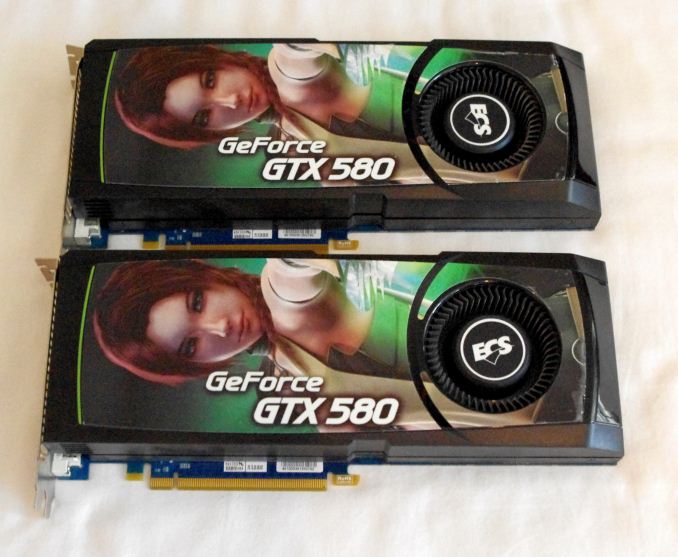
ECS is both a motherboard manufacturer and an NVIDIA card manufacturer, and while most of their VGA models are sold outside of the US, some do make it onto e-e-tailers like Newegg. This GTX 580 is also a reference model, with 512 CUDA cores at 772 MHz and 1.5 GB of 4 GHz GDDR5 memory. We have two cards to be used in 1x and 2x configurations at PCIe 2.0.
The Motherboards
The CPU is not always the main part of the picture for this sort of review – the motherboard is equally important as the motherboard dictates how the CPU and the GPU communicates with each other, and what the lane allocation will be. As mentioned on the previous page, there are 20+ PCIe configurations for Z77 alone when you consider some boards are native, some use a PLX 8747 chip, others use two PLX 8747 chips, and about half of the Z77 motherboards on the market enable four PCIe 2.0 lanes from the chipset for CrossFireX use (at high latency). We have tried to be fair and take motherboards that may have a small premium but are equipped to deal with the job. As a result, some motherboards may also use MultiCore Turbo, which as we have detailed in the past, gives the top turbo speed of the CPU regardless of the loading.
As a result of this lane allocation business, each value in our review will be attributed to both a CPU, whether it uses MCT, and a lane allocation. This would mean something such as i7-3770K+ (3 - x16/x8/x8) would represent an i7-3770K with MCT in a PCIe 3.0 tri-GPU configuration. More on this below.
For Haswell: Gigabyte Z87X-UD3H, ASUS Z87-Pro, and MSI Z87-GD65 Gaming
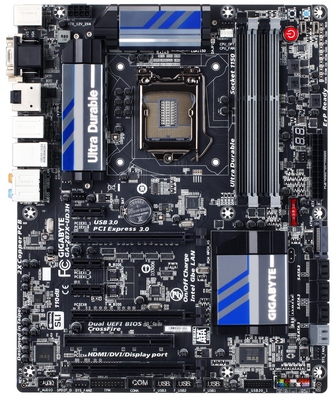
The ASUS Z87-Pro nominally offers an PCIe 3.0 x8/x8 layout with an additional PCIe 2.0 x4 from the PCH, however this starts in x1 mode without a change in the BIOS.
The MSI Z87A-GD65 gives us PCI 3.0 x8/x4/x4.
The Gigabyte Z87X-UD3H gives PCIe 3.0 x8/x8 + PCIe 2.0 x4, but this motherboard was tested with MCT off.
For Sandy Bridge and Ivy Bridge: ASUS Maximus V Formula, Gigabyte Z77X-UP7 and Gigabyte G1.Sniper M3

The ASUS Maximus V Formula has a three way lane allocation of x8/x4/x4 for Ivy Bridge, x8/x8 for Sandy Bridge, and enables MCT.
The Gigabyte Z77X-UP7 has a four way lane allocation of x16/x16, x16/x8/x8 and x8/x8/x8/x8, all via a PLX 8747 chip. It also has a single x16 that bypasses the PLX chip and is thus native, and all configurations enable MCT.
The Gigabyte G1.Sniper M3 is a little different, offering x16, x8/x8, or if you accidentally put the cards in the wrong slots, x16 + x4 from the chipset. This additional configuration is seen on a number of cheaper Z77 ATX motherboards, as well as a few mATX models. The G1.Sniper M3 also implements MCT as standard.
For Sandy Bridge-E: ASRock X79 Professional and ASUS Maximus IV Extreme
The ASRock X79 Professional is a PCIe 2.0 enabled board offering x16/x16, x16/x16/x8 and x16/x8/x8/x8.
The ASUS Maximus IV Extreme is a PCIe 3.0 enabled board offering the same as the ASRock, except it enables MCT by default.
For Westmere Xeons: The EVGA SR-2
Due to the timing of the first roundup, I was able to use an EVGA SR-2 with a pair of Xeons on loan from Gigabyte for our server testing. The SR-2 forms the basis of our beast machine below, and uses two Westmere-EP Xeons to give PCIe 2.0 x16/x16/x16/x16 via NF200 chips.
For Core 2 Duo: The MSI i975X Platinum PowerUp and ASUS Commando (P965)
The MSI is the motherboard I used for our quick Core2Duo comparison pipeline post in Q1 2013 – I still have it sitting on my desk, and it seemed apt to include it in this test. The MSI i975X Platinum PowerUp offers two PCIe 1.1 slots, capable of Crossfire up to x8/x8. I also rummaged through my pile of old motherboards and found the ASUS Commando with a CPU installed, and as it offered x16+x4, this was tested also.
For Llano: The Gigabyte A75-UD4H and ASRock A75 Extreme6
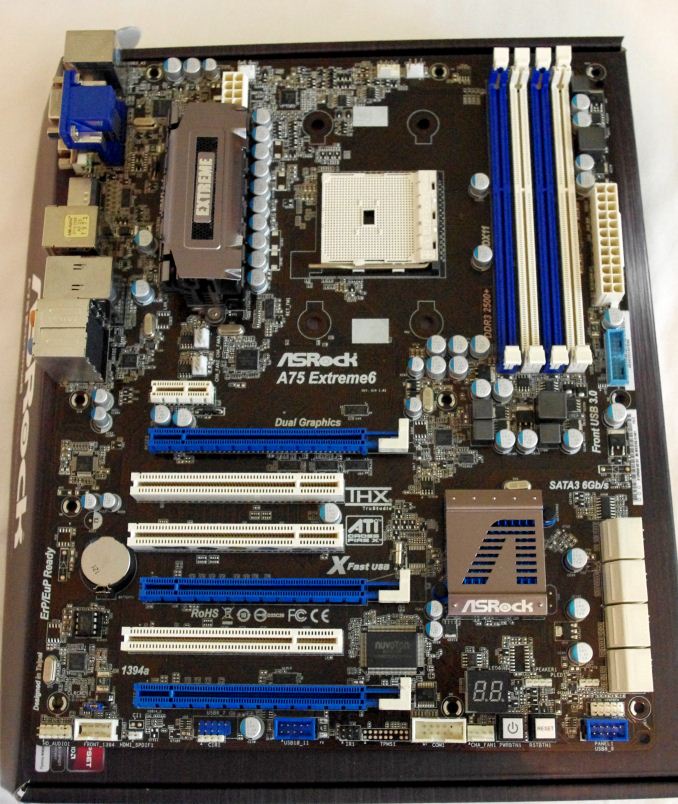
Llano throws a little oddball into the mix, being a true quad core unlike Trinity. The A75-UD4H from Gigabyte was the first one to hand, and offers two PCIe slots at x8/x8. Like the Core2Duo setup, we are not SLI enabled.
After finding an A8-3850 CPU as another point against the A6-3650, I pulled out the A75 Extreme6, which offers three-way CFX as x8/x8 + x4 from the chipset as well as the configurations offered by the A75-UD4H.
For Trinity: The Gigabyte F2A85X-UP4
Technically A85X motherboards for Trinity support up to x8/x8 in Crossfire, but the F2A85X-UP4, like other high end A85X motherboards, implements four lanes from the chipset for 3-way AMD linking. Our initial showing on three-way via that chipset linking was not that great, and this review will help quantify this.
For AM3: The ASUS Crosshair V Formula
As the 990FX covers a lot of processor families, the safest place to sit would be on one of the top motherboards available. Technically the Formula-Z is newer and supports Vishera easier, but we have not had the Formula-Z in to test, and the basic Formula was still able to run an FX-8350 as long as we kept the VRMs cool as a cucumber. The CVF offers up to three-way CFX and SLI testing (x16/x8/x8).
The Memory
Our good friends at G.Skill are putting their best foot forward in supplying us with high end kits to test. The issue with the memory is more dependent on what the motherboard will support – in order to keep testing consistent, no overclocks were performed. This meant that boards and BIOSes limited to a certain DRAM multiplier were set at the maximum multiplier possible. In order to keep things fairer overall, the modules were adjusted for tighter timings. All of this is noted in our final setup lists.
Our main memory testing kit is our trusty G.Skill 4x4 GB DDR3-2400 9-11-11 1.65 V RipjawsX kit which has been part of our motherboard testing for over twelve months. For times when we had two systems being tested side by side, a G.Skill 4x4 GB DDR3-2400 10-12-12 1.65 V TridentX kit was also used.
For The Beast, which is one of the systems that has the issue with higher memory dividers, we pulled in a pair of tri-channel kits from X58 testing. These are high-end kits as well, currently discontinued as they tended to stop working with too much voltage. We have a sets of 3x2 GB OCZ Blade DDR3-2133 8-9-8 and 3x1 GB Dominator GT DDR3-2000 7-8-7 for this purpose, which we ran at 1333 6-7-6 due to motherboard limitations at stock settings.
Our Core2Duo CPUs clearly gets their own DDR2 memory for completeness. This is a 2x2 GB kit of OCZ Platinum DDR2-666 5-5-5.
For Haswell we were offered new kits for testing, this time from Corsair and their Vengeance Pro series. This is a 2x8 GB kit of DDR3-2400 10-12-12 1.65 V.


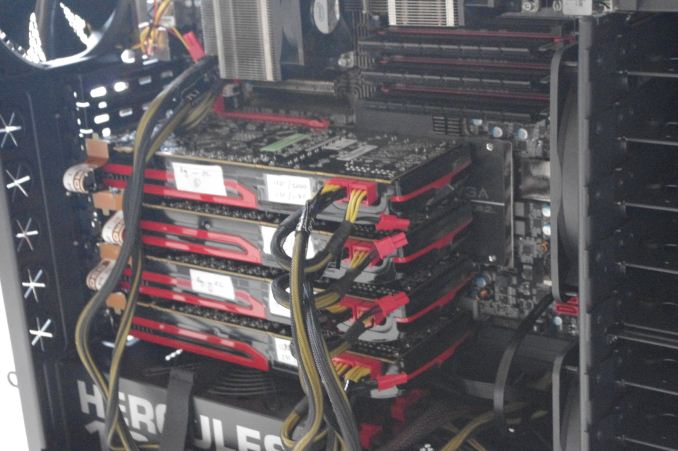
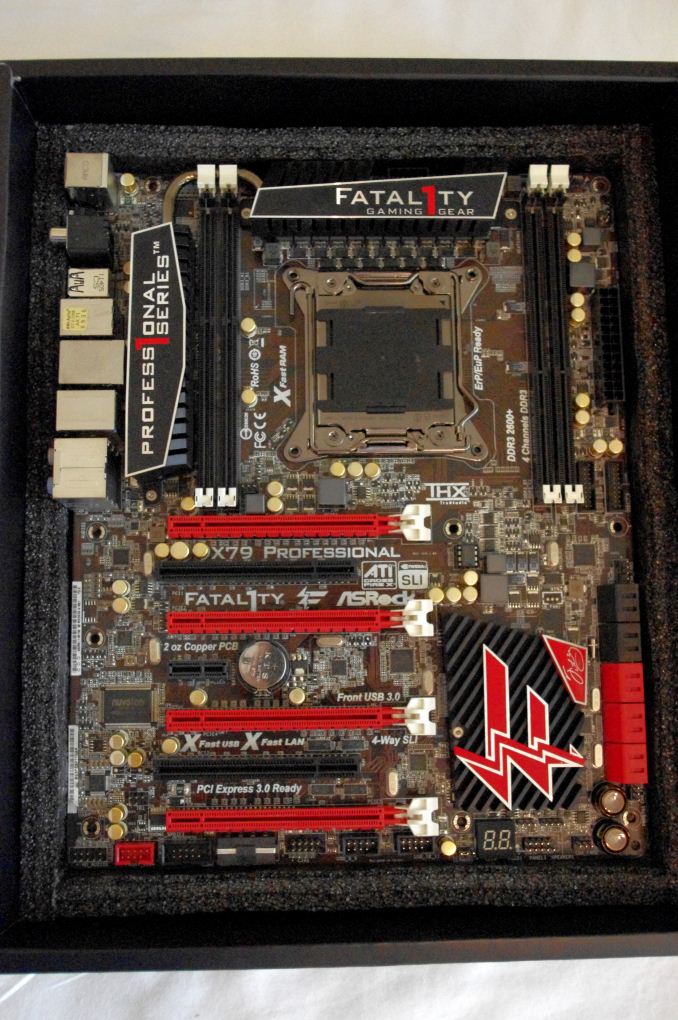
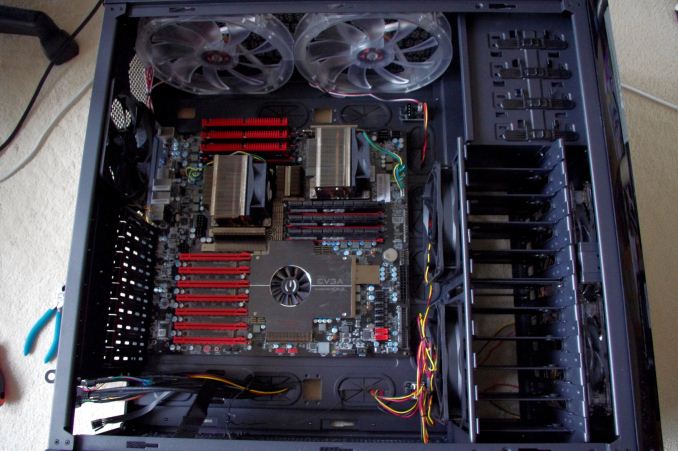
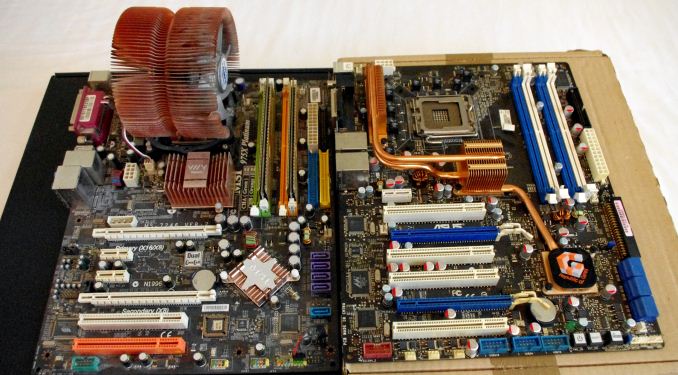
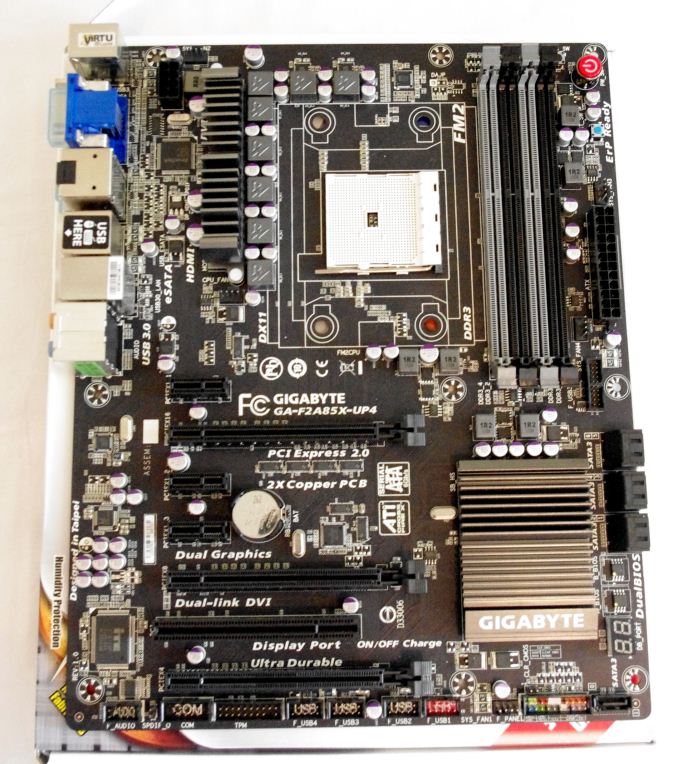
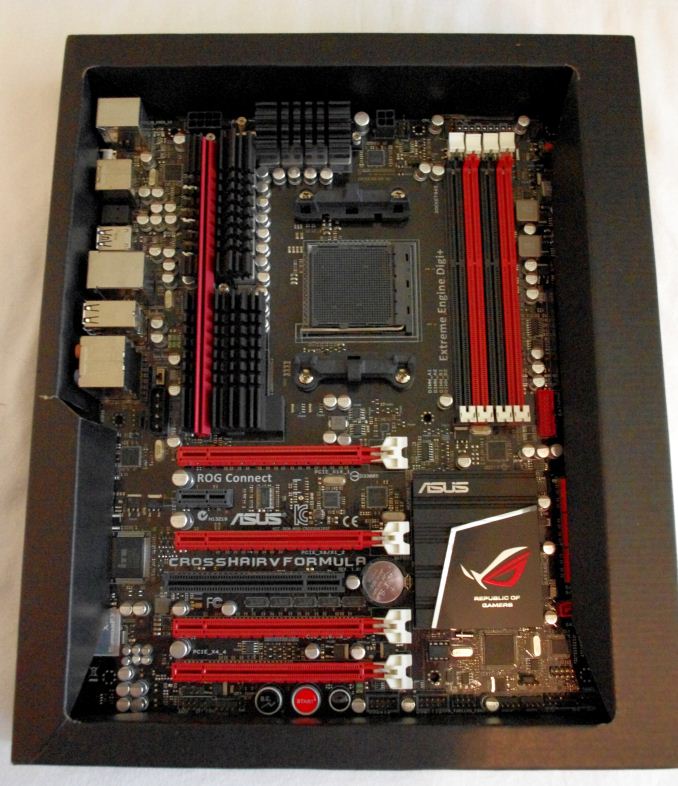

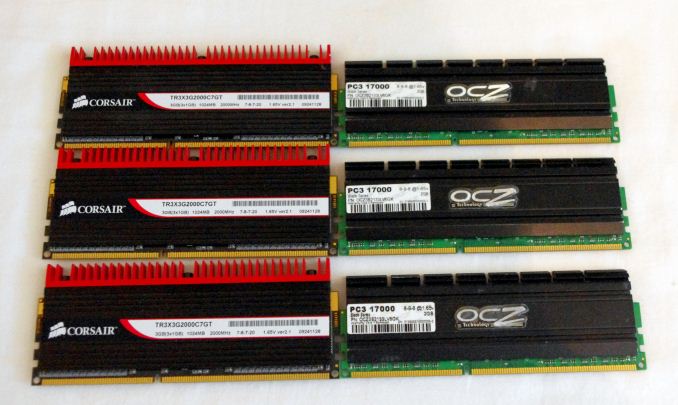
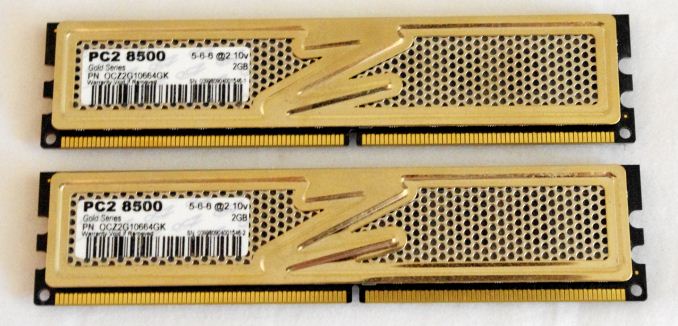
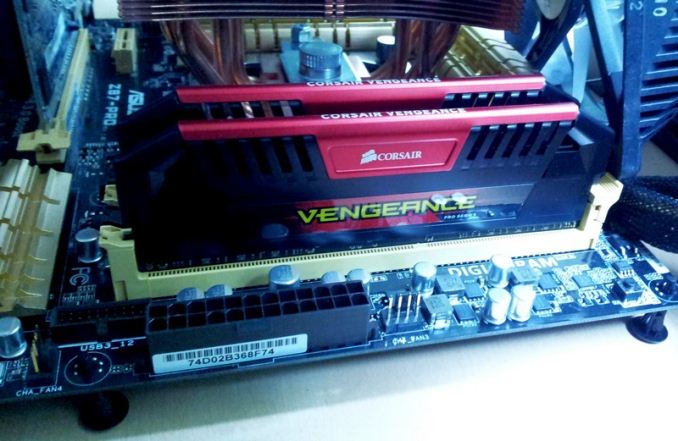








116 Comments
View All Comments
TheJian - Wednesday, June 5, 2013 - link
So if you take out the 1920x1200 from the steam survey (4.16 - 2.91% right?), you've written an article for ~1.25% of the world. Thanks...I always like to read about the 1% which means absolutely nothing to me and well, 98.75% of the world.WHO CARES? As hardocp showed even a Titan still can't turn on EVERY detail at even 1920x1080. I would think your main audience is the 99% with under $1000 for a video card (or worse for multigpu) and another $600-900 for a decent 1440p monitor you don't have to EBAY from some dude in Korea.
Whatever...The midpoint to you is a decimal point of users (your res is .87%, meaning NOT ONE PERCENT & far less have above that so how is that midpoint? I thought you passed MATH)?...Quit wasting time on this crap and give us FCAT data like pcper etc (who seems to be able to get fcat results into EVERY video card release article they write).
"What we see is 30.73% of gamers running at 1080p, but 4.16% of gamers are above 1080p. If that applies to all of the 4.6 million gamers currently on steam, we are talking about ~200,000 individuals with setups bigger than 1080p playing games on Steam right now, who may or may not have to run at a lower resolution to get frame rates."
That really should read ~55,000 if you take away the 2.91% that run 1920x1200. And your gaming rig is 1080p because unless you have a titan (which still has problems turning it all on MAX according to hardocp etc to remain playable) you need TWO vid cards to pull off higher than 1920x1200 without turning off details constantly. If you wanted to game on your "Korean ebay special" you would (as if I'd ever give my CC# to some DUDE in a foreign country as Ryan suggested in the 660TI comment section to me, ugh). It's simply a plug change to game then a plug change back right? Too difficult for a Doctor I guess? ;)
This article needs to be written in 3 years maybe with 14nm gpus where we might be able to run a single gpu that can turn it all on max and play above 30fps while doing it and that will still be top rung, as I really doubt maxwell will do this, I'm sure they will still be turning stuff off or down to stay above 30fps min, just as Titan has to do it for 1080p now. Raise your hand if you think a $500 maxwell card will be 2x faster than titan.
1440p yields an overall pixel count of 3,686,400 pixels for a monitor in 1440p resolution, substantially higher than the 2,073,600 pixels found on a 1080p monitor/tv etc. So since Titan is SHORT of playing ALL games maxed on 1080p we would need ~2x the power at say $500 for it to be even called anywhere NEAR mainstream at 1440p right? I don't see NV's $500 range doing 2x Titan with maxwell and that is 6-9 months away (6 for AMD volcanic, ~7-9 for NV?). Raise your hand if you call $500 mainstream...I see no hands. They may do this at 14nm for $300 but this is a long ways off right and most call $200 mainstream right? Hence I say write this in another 3yrs when the 1080p number of users in the steam survey (~31%) is actually the 1440p#. Quit writing for .87% please and quit covering for AMD with FCAT excuses. We get new ones from this site with every gpu article. The drivers changed, some snafu that invalidated all our data, not useful for this article blah blah, while everyone else seems to be able to avoid all anandtech's issues with FCAT and produce FCAT after FCAT results. Odd you are the ONLY site AMD talked too directly (which even Hilbert at Guru3d mentions...rofl). Ok, correction. IT'S NOT ODD. AMD personal attention to website=no fcat results until prototype/driver issues are fixed....simple math.
http://www.alexa.com/siteinfo/anandtech.com#
Judging your 6 month traffic stats I'd say you'd better start writing REAL articles without slants before your traffic slides to nothing. How much more of a drop in traffic can you guys afford before you switch off the AMD love? Click the traffic stats tab. You have to be seeing this right Anand? Your traffic shows nearly in half since ~9 months ago and the 660TI stuff. :) I hope this site fixes it's direction before Volcanic & Maxwell articles. I might have to start a blog just to pick the results of those two apart along with very detailed history of the previous articles and comments sections on them. All in one spot for someone to take in at once I'm sure many would be able to do the math themselves and draw some startling conclusions about the last year on this site and how it's changed. I can't wait for Ryan's take on the 20nm chips :)
Laststop311 - Wednesday, June 5, 2013 - link
Who actually buys a computer and does nothing but game on it every second they are on it? That's why the A8-5600k should not be the recommended cpu. Just gonna drag you down in every other thing you do with the computer. The i5-2500k should be here too. You can get them for a STEAL on ebay used I've seen them go for around 140-150. Sure you can pay 100-110 on ebay for the a8-5600k is a 40 dollar savings worth that much performance loss?TheJian - Sunday, June 9, 2013 - link
I didn't even go into this aspect (it's not just about gaming as you say clearly). But thanks for making the other 1/2 of my argument for me :)Your statement plus mine makes this whole article & it's conclusions ridiculous. Most people buy a PC and keep it for over 3yrs, meaning you'll be punished for a LONG time every day in everything you do (gaming, ripping, rar, photos etc etc). AMD cpu's currently suck for anyone but very poor people. Even for the poor, I'd say save for another month or two as $50-100 changes the world for years for your computing no matter what you'll use it for. Or axe your vid card for now and by a higher end intel. Survive for a bit until you can afford a card to go into your machine. AMD just isn't worth it for now on desktops. I'm an AMD fan, but the computing experience on Intel today is just better all around if you ever intend on putting in a discrete card worth over say $100 and this comment only gets worse as gpu's improve leaving your cpu behind.
You will get more cpu limited every year. Also it's much easier to change gpu's vs cpu's (which usually requires a new board for substantial gains unless you really buy on the low-end). Having said that, buying low-end haswell today gets you a broadwell upgrade later which should yield some decent gains since it's 14nm. Intel is just hard to argue against currently and that is unfortunate for AMD since the bulk of their losses is CPU related and looks to just get worse (the gpu division actually made ~15mil or so, while cpu side lost 1.18B!). Richland changes nothing here, just keeps the same audience it already had for total losses. They need a WINNER to get out of losses. Consoles may slow the bleeding some, but won't fix the losses. Steamroller better be 30-40% faster (10-20% is not enough, it will again change nothing).
firefreak111 - Wednesday, June 5, 2013 - link
Quote: What we see is 30.73% of gamers running at 1080p, but 4.16% of gamers are above 1080p. If that applies to all of the 4.6 million gamers currently on steam, we are talking about ~200,000 individuals with setups bigger than 1080p playing games on Steam right now, who may or may not have to run at a lower resolution to get frame rates.Wrong. 2.91% is 1200p (1080p at a 16:10 ratio), which is barely higher resolution. 1.25% are truly above 1440p, a much smaller number. ~57 000 gamers compared to 1,380,000 gamers... I respect 1440p, getting a new system to play at that res, but the mainstream isn't any time soon.
I wish I could take this article seriously. You choose 4 games to recommend a CPU (Metro 2033, GPU Bound, Dirt 3, racing game focused on graphics, Civ V, which you knock off as unimportant based on FPS not turn times (which is all anyone really cares about in the late-game) and Sleeping Dogs, which is Open World but doesnt have complex scripting or AI.) and then choose AMD based on 3/4 of the games which are GPU bound and thus not favoring the faster Intel CPU's much?
FPS will only get you so far. Smoothness will be better on the faster CPU's. Anyway, most importantly, if you want to have a serious article with a good recommendation, how about testing CPU bound modern games? Shogun 2, mass AI calculations for many units combined with complex turn times (which is very important in any turn based game). Skyrim, with actually complex AI and large amounts of scripting, which uses the CPU to its utmost. Crysis 3, a good test for a balance of CPU and GPU focus. BF3 Multiplayer, which from personal experience needs a good CPU to play well.
Use Nvidia and AMD GPU's, one could favor the other leading to a better recommendation (This brand for this CPU). Civ V will see large performance gains on a Nvidia card combined with a good CPU, due to its use of deferred contexts (dx11 multithreading) and Nvidia's support of it (AMD seriously needs to step up and support it, most game engines aren't because AMD isn't. Its built into DX11, so support it AMD!).
Lastly, recommend for the mainstream. 1080p is the mainstream. Not 1440p+, which is 1.25% of steam players, 1080, which is more than 30%.
CiccioB - Wednesday, June 5, 2013 - link
I wonder what's the meaning of conducting such a big effort like this to test CPU performances and then making all the systems GPU bottlenecked just to take into consideration 4% of the gaming population.Moreover, some test done with an "old" GTX580 which bottlenecks in those resolution quite soon.
I renew my request of updating the list of games used and using most "popular" video settings in order to make a real comparison of what a gamer may find using the usual setup it may use at home. Monitor bigger than 24" are not popular at all.
Maybe an integration with a SLI/Tri SLI setup and a 5800x resolution may be added, but surely that should not be considered the way things work normally and taken a sdefinitive benchmark results to get some obviously confusing conclusions.
An A10-xxxx is way way behind any i5 CPU, and often even behind some i3 in realgaming. I can't really understand how one can believe in such a suggestion.
I am starting to think that something else rather than objective results are being created and shown here.
TheJian - Sunday, June 9, 2013 - link
AMD only visited ONE website in recent history. ANANDTECH.Also note they pushed this 1440p idea when the numbers were EVEN WORSE in the 660TI article comments section (and even the articles conclusions, we're talking 9 months ago - 1440p is STILL not popular nor above it). See Ryan's exchange in that article with me. He was pushing the Korean Ebay dude then...ROFL. I pointed out then that amazon only had 2 people selling them and they had no reviews (ONE, which was likely the guy that owned the place selling it), no support page, no phone, and their website wasn't even their own domain and email was a gmail address if memory serves. Essentially giving your CC# to some dude in Korea and praying. Which another site mentioned he did pray when ordering a test unit...LOL Techreport's 1440p korean review back then if memory serves. Yet Ryan claimed everyone in the forums was doing this...Whatever... Don't even get me started on Jared's personal attack while ignoring my copious amounts of data proving Ryan's article BS even with using Ryan's own previous article's benchmarks! It's kind of hard to argue against your own data right?
I sincerely hope this site goes back to producing articles on cpu/gpu that are worthy of reading. These days all they do is hide AMD's inadequacies vs. Intel and NV. They are the only site saying things like "buy an A8-5600 for any SINGLE gpu machines"...I can't believe how far they've gone in the last 9 months. Their traffic stats show I'm not alone. The comments here show I'm not alone. AMD can't be paying them enough to throw their whole reputation down the drain. Look what the Sysmark/Bapco/Van Smith scandal did to Tomshardware (Tom even changed all his bylines to "tom's staff" or some crap like that). He had to sell at far less than the site was worth before the damage, and it took years to get back to a better reputation and wash off the stink. Heck I stopped reading in disgust for years and many IT friends did the same. I mean they were running Intel ads in AMD review articles...LOL. I think that is just wrong (the van smith stuff was just unconscionable). For those who remember Van, he still writes occasionally at brightsideofnews.com (I only recently discovered this, also writes on vanshardware but not much analysis stuff). Good to see that.
Pjotr - Wednesday, June 5, 2013 - link
What happened to the Q9400 in the GPU charts, it's missing? No, I didn't read the full article.HappyHubris - Wednesday, June 5, 2013 - link
I know this was addressed in the article, but no 2013 gaming part recommendation should be published based on average FPS.Any Ivy Bridge i3 mops the floor with a 5800K, and I'd imagine that Sandy-based i3s would do so even cheaper. http://techreport.com/review/23662/amd-a10-5800k-a...
Kudos on an article that includes older processors, though...it's nice to see more than 1 or 2 generations in a review.
ArXiv76 - Wednesday, June 5, 2013 - link
Having read technical articles, white papers and tech reviews for over 25 years I can't remember ever reading a "finding perfection" examination. My hypothesis is, does there exist a CPU(all CPU's tested) to GPU(all OEM's tested) mix that is ideal. Obviously speed is king so I am thinking more from an engineering perspective.Does this exist?
Steam and EA online are both great services. If there is a service that takes away physical media it's a huge winner to me. I still have my piles Sierra game boxes stored away.
bigdisk - Wednesday, June 5, 2013 - link
Oh, Anand / Ian CutressYou really shouldn't put your benchmark title and settings within an image. You absolutely want this as text in the page for SEO.
Cheers, good article.